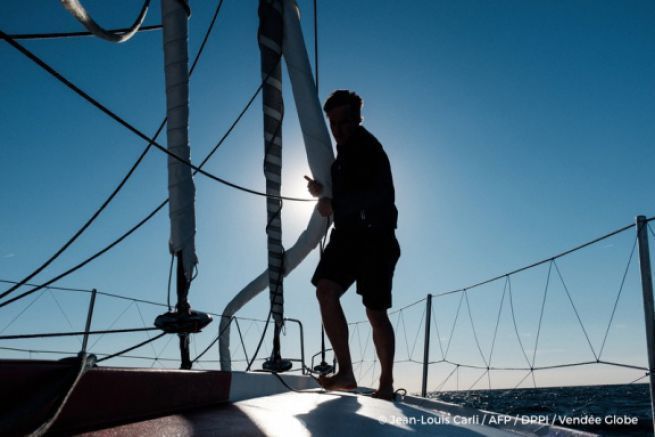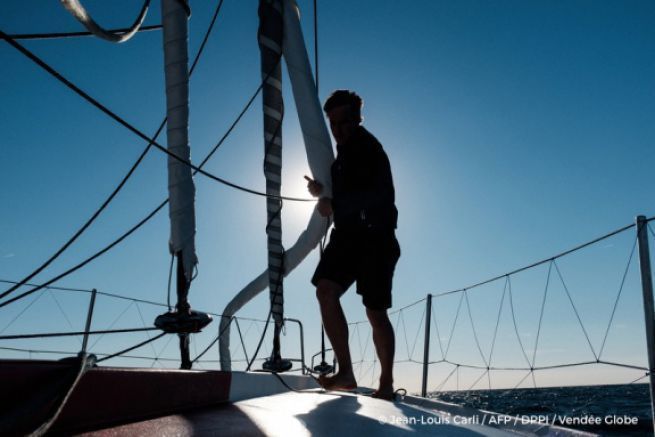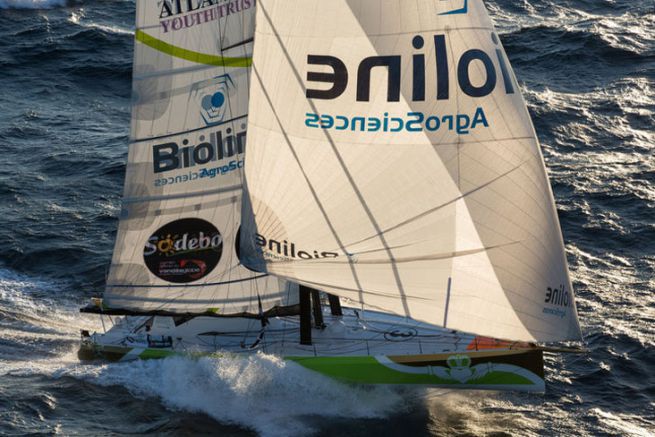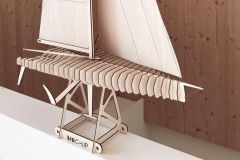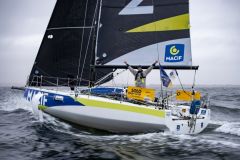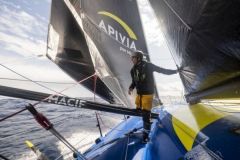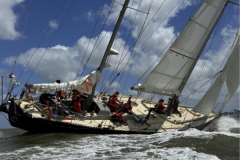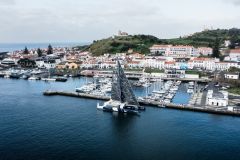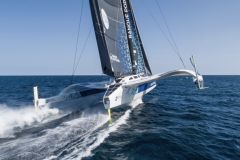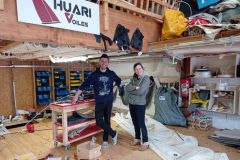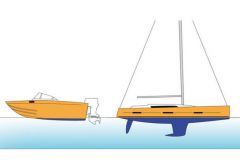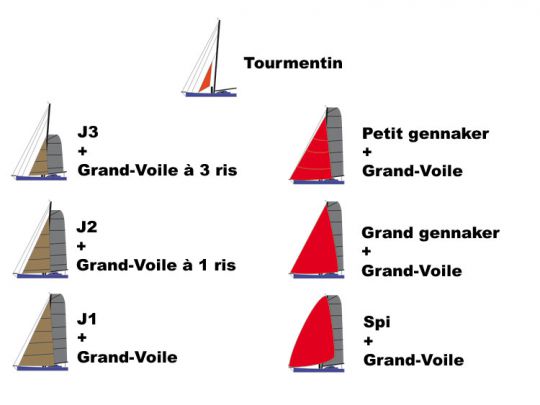
Mainsail
This sail installed at the back of the mast on the boom measures about 180 m2. Its surface area can be adjusted by reefing. In the Vendée Globe, the IMOCA boats have 3 reefs (some have 4). Mainsails are fully battened, meaning that the battens go from the mast to the leech. This is the weakness of these sails when the boat undergoes an involuntary gybe and the sail goes from one side to the other with violence, the battens break. The skippers take several spare ones with them.
The materials of the sails have evolved to offer a better behaviour in time (less deformation) and to be less heavy. Thus a sail in "classic" fabric (Spectra) weighs 160 kg while the new sails from North Sails in 3Di weigh less than 100 kg.
Most of the skippers managed to afford a new sail for the start except for Sébastien Destremau who, with the smallest budget in the race, was content to re-sail a second-hand sail.
In racing, the jibs (headsails) are called J (J1 to J3). The "J" comes from Jib (genoa in English).
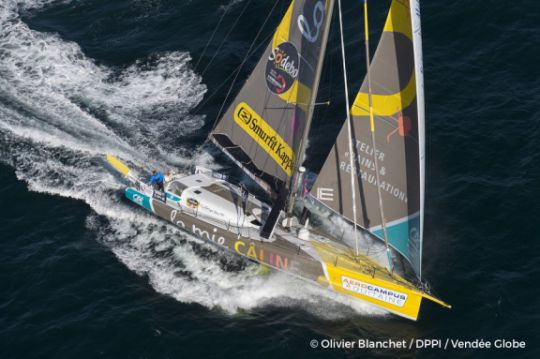
J1 euros solent
The J1 is the largest jib (140 m2). It is trimmed at the bow and arrives almost at the masthead. It is the light airsail to sail upwind. It will be very useful during the descent and the ascent of the Atlantic, especially when passing the Doldrums.
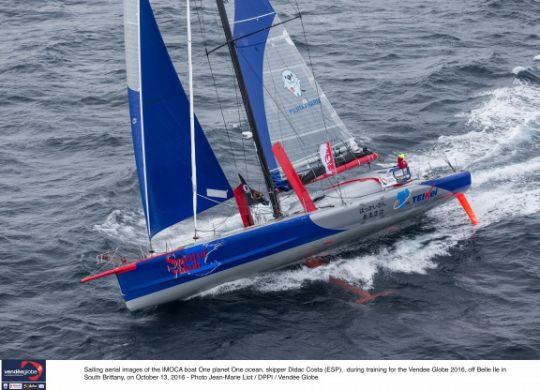
J2 euros trinquette
The J2 is the sail that always stays on station. Indeed, its forestay is structural (it holds the mast). It is therefore difficult to lower it. This jib of about 100 m2 is a key part of the boat's performance. Some competitors have not hesitated to make it in 3Di from North Sails to ensure that it works properly. If there was only one (with the mainsail), this is the one the skippers would choose.

J3 euros ORC
This small sail is designed for heavy weather and is set back from the J2. It measures about 50 m2 and can be lowered. If the skippers use it with the mainsail at 3 e if the sail is reefed, it can also be unfurled at the same time as the downwind sails (spinnaker, large gennaker) to increase the sail area in good weather.
Tourmentine
It is a very small jib made mandatory by the regulations. Often fluorescent orange in color, it is only used in case of a really strong storm. In other words, it will remain in the bag throughout the Vendée Globe, really only used for trimming.
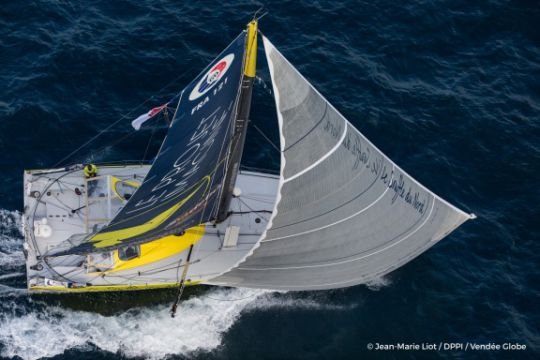
Small gennaker euros Code zero
Often called "Code 0", this downwind sail (200 m2) is used when there is a breeze (25 to 35 knots of wind). It is trimmed on the bowsprit and arrives at the hull, under the masthead. Quite flat, it allows to sail upwind in light airs (like a code zero).
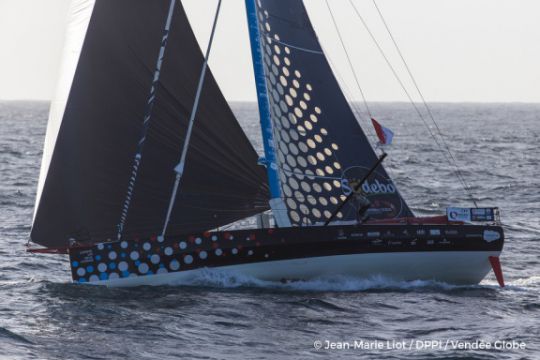
Large gennaker
This 300 m2 large sail is furled on a furler (unlike the spinnaker). It is therefore easier to maneuver, but cannot be set up with a full downwind (between 120 and 160° from the wind).
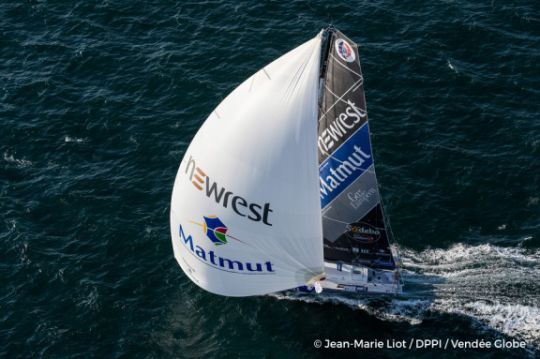
Spi
The spinnaker remains the largest sail on board (400 m2!). It is only used in light winds for downwind sailing (between 5 and 20 knots of wind). It is an asymmetrical spinnaker (without spinnaker pole) which is hoisted on the bowsprit.) The new IMOCA foils, which have to be tighter to the wind in order to use their appendages and gain speed, are almost never used. Only in very light winds.
